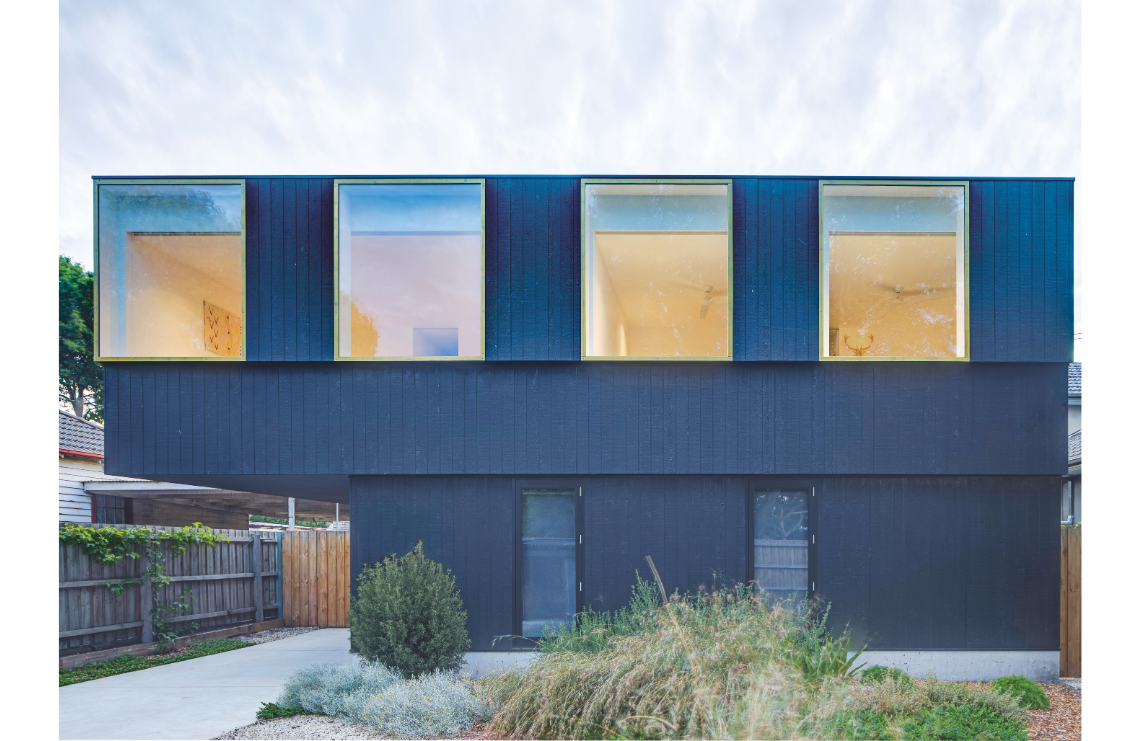Some stories start quietly, gradually. This one began with an earthquake.
Though the clients originally moved to Christchurch to be closer to their elderly parents, a catastrophic
earthquake sent them back to Melbourne. There, they began to plan for a home in which three generations of the family — the clients, their children and their elderly parents — could live.
After investigating an off -the-shelf dual occupancy, the clients moved away from this idea as they felt the plan was too inflexible for the orientation of their lot. They approached panovscott architects to complete what eventually became a flexible dwelling for the entire family.
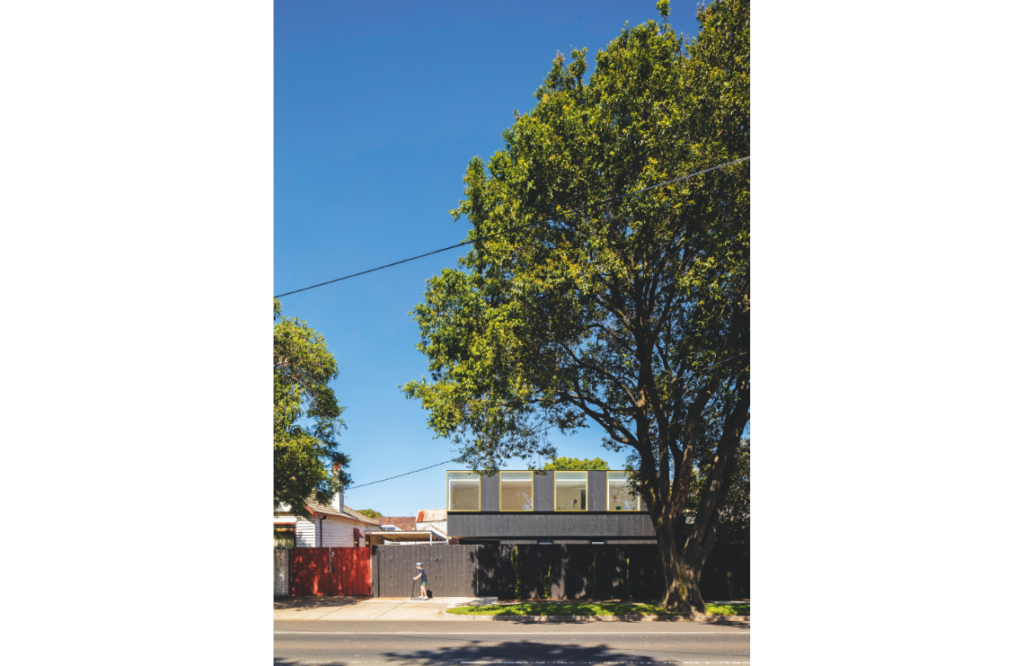
The lot’s original three-bedroom bungalow was no-one’s cup of tea. Cold in the winter and hot in the summer, the structure was cramped, architecturally flawed, and not at all suitable for a multigenerational home.
Though only one third of Greater Melbourne’s households are traditional family units comprising two adults and their children, the suburban Australian home is still almost invariably a large, freestanding house with three or four bedrooms.
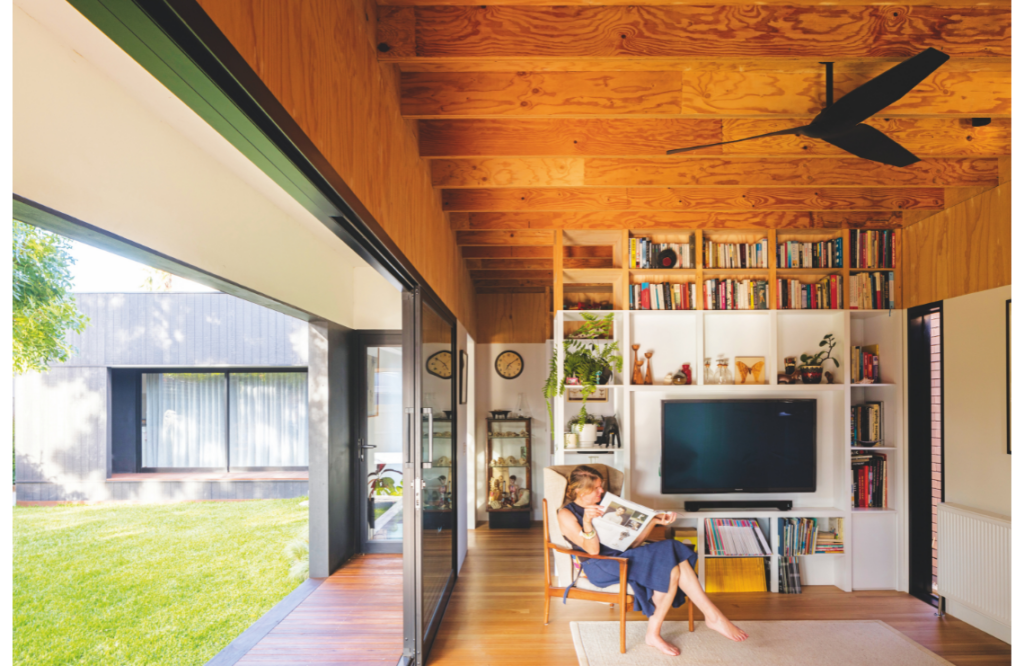
“These factors combine to establish the necessity for a now largely redundant house type to be transformed. Infill opportunities have the capacity to enable suburbs of inherently high amenity to evolve and for housing infrastructure to once again happily facilitate how we need and want to live,” says co-director of panovscott, Anita Panov. “So in one direction, this project is about suburban infill transformations to enable intensified use and diversity of housing on the prevalent lot type of around 15m x 45m found within Melbourne’s expansive middle ring suburbs. In the other direction, it is also about the making of a place for three generations of the same family to live a rich and rewarding life.”
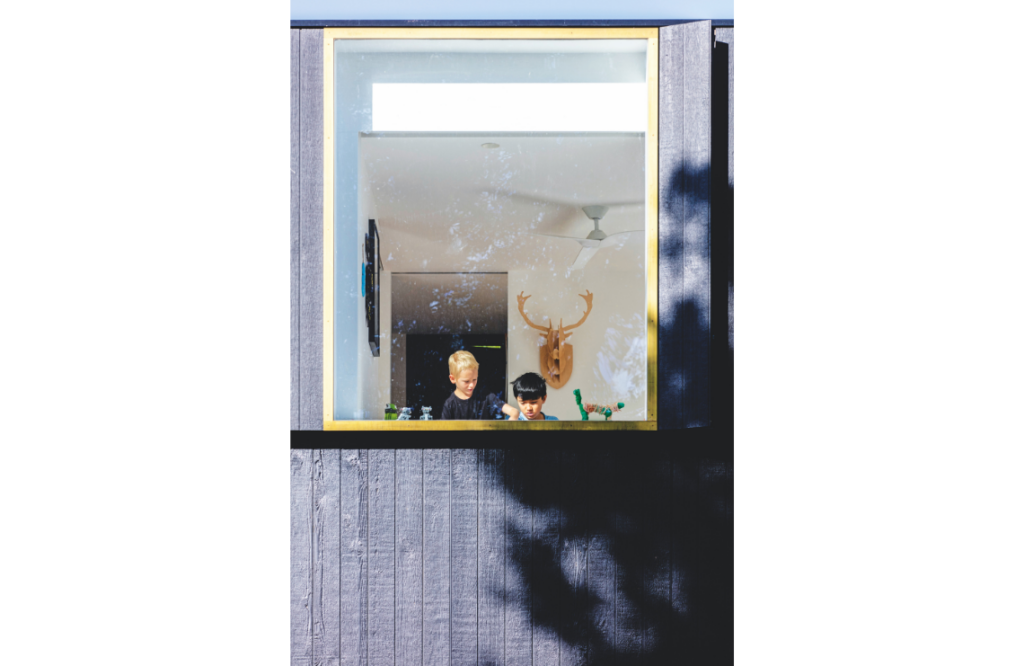
A study in intergenerational living, Kindred House takes a renegade approach to shaping the family’s future home life. The property comprises two homes. The long, double-storey, three-bedroom abode stretching to the rear boundary of the property is allocated to the clients and their children, while the elderly parents now reside in the single-storey, two-bedroom house at the front of the lot. The property was designed to be resilient to circumstance and life’s unpredictability; the configuration of the two dwellings can easily be transformed to one large five-bedroom home if required, and a well-placed sliding door facilitates its reconfiguration to a four-bedroom main house and smaller one-bedroom dwelling at a moment’s notice. Several other configurations are also possible with minimal structural changes, if the family wishes to alter living arrangements in the future.
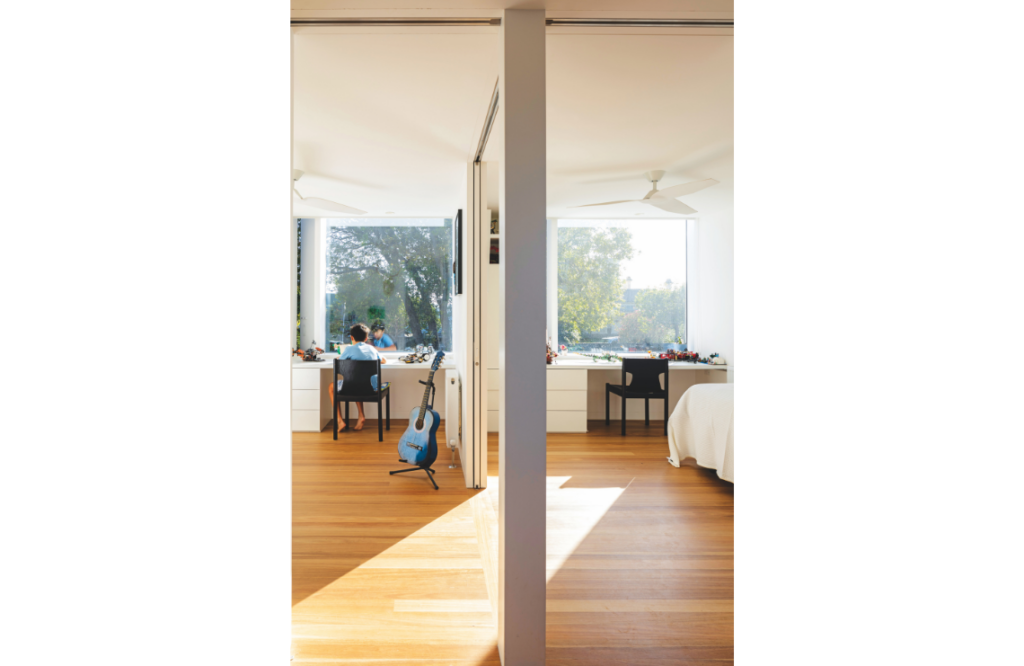
External rooms and shared spaces create links between Kindred House’s two dwellings, encouraging flow of movement. Though the strategy was born when brainstorming ways to manage costs, it grew into one of the property’s most enchanting elements. “The entry is a nod to the local vernacular tradition of the modernist carport,” Anita says. As the family only owns one car and prefer to park it on the street, the project team moved elements that would usually be found in the hallway near the entrance of a large home — including a space for shoes, some seating and a nearby coat cupboard — to an undercover
outdoor area in lieu of a garage. The space also includes a workshop, bike storage, and plenty of room for creative projects beloved by young and old alike. “At the other end of the house is the afternoon garden room. This is a space that has a very similar spatial proportion to the adjacent internal living spaces. Rooms as verandahs and verandahs as rooms,” shares co-director of panovscott, Andrew Scott. Dubbed the “Shared Garden”, it is a beautiful space to meet for meals, drinks and quality time as a family.
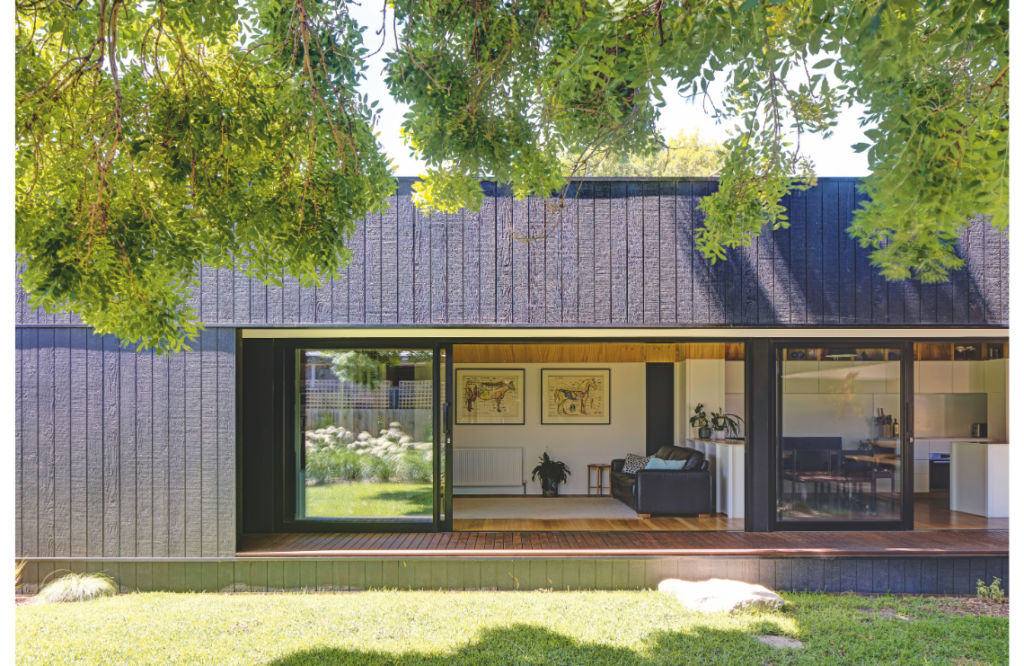
“In determining the arrangement of the massing on any site, our fundamental position is that the garden comes first, most especially in housing within a suburban setting,” notes Andrew. Kindred House boasts not one but six strategically placed gardens, each with a unique, distinct character. While the aforementioned Shared Garden is a space in which all family members can gather easily, Hall Garden was designed to connect the entrance, living spaces and bedrooms within the property’s larger abode. The window seat in the home’s Music Room opens up to this intimate space, giving the family access to beautiful views of the sculptural dinner plate fig tree. Street Garden is located along the front boundary of the property, while Front Garden is home to low groupings of native plants and a dedicated path that leads to the smaller dwelling. The property’s final garden, dubbed Potting Garden, was born as a space in which the clients’ elderly parents could nurture and tend to their plants.
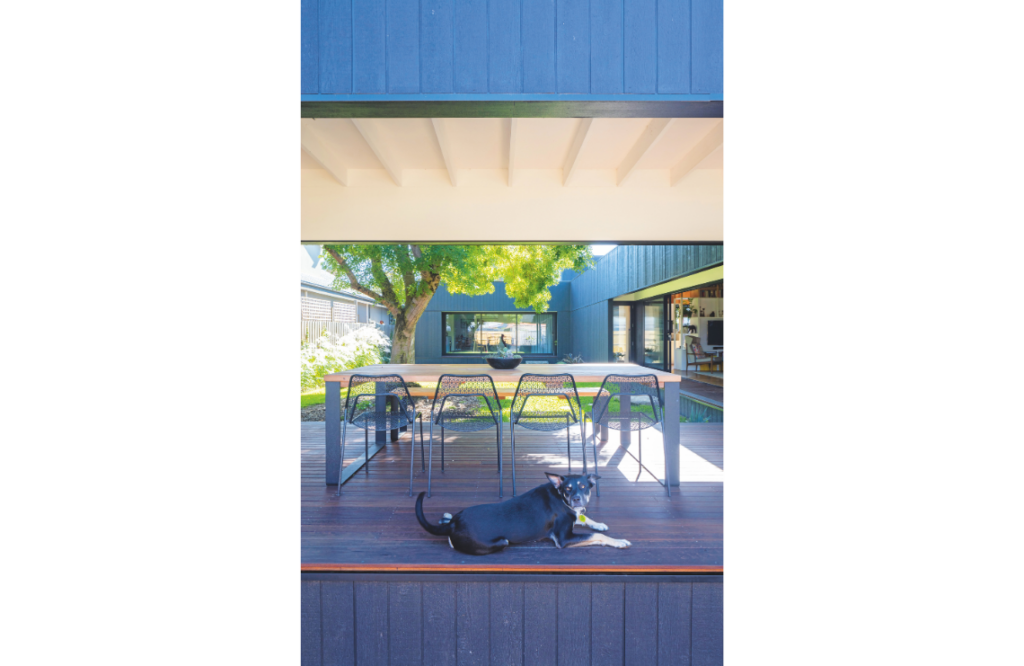
The family has expanded a little since the beginning of the project. Ruby the dog joined the multigenerational family later on in the process, but seems perfectly content.
This home is one that celebrates the nature of family. Though the story began with a profound tragedy, Kindred House has become the backdrop for the family’s happily ever after.

